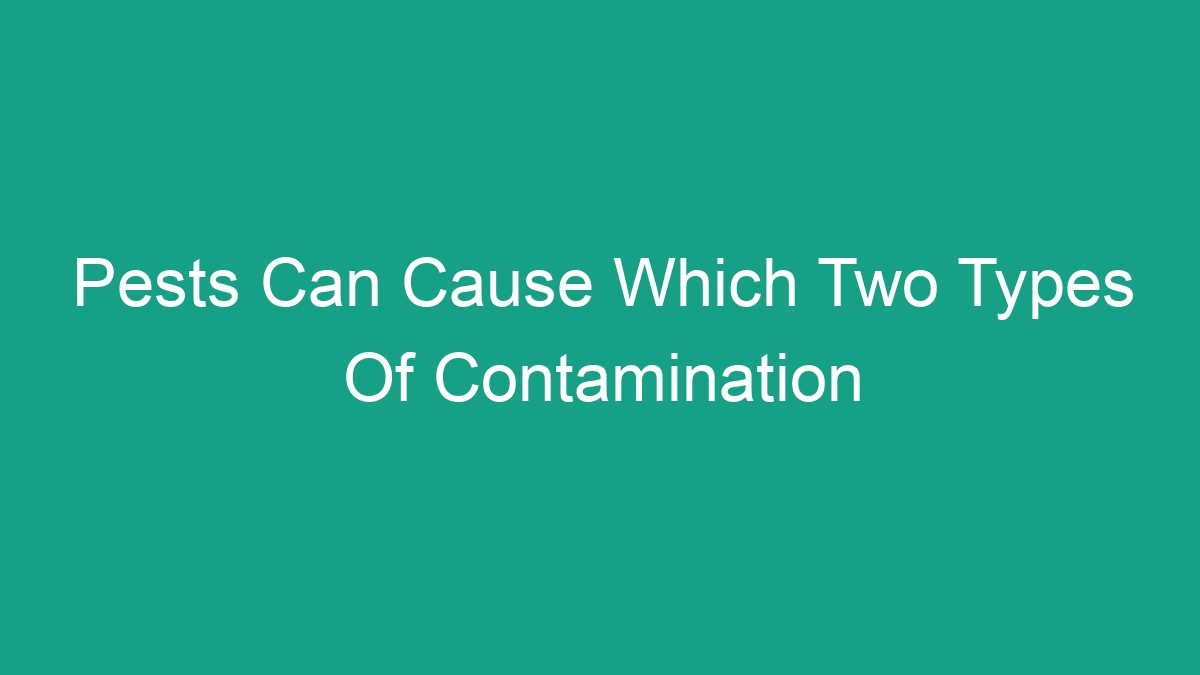
Pests can cause both physical and biological contamination in a variety of settings, including residential, commercial, and industrial environments. Understanding the different types of contamination caused by pests is crucial in order to prevent and mitigate the impact of pest infestations. This article will explore the two main types of contamination caused by pests and provide insights into how to address these issues effectively.
Physical Contamination
Physical contamination refers to the presence of foreign objects in a product or environment, which can pose a risk to human health. Pests such as rodents, insects, and birds can contribute to physical contamination through their activities and behaviors.
- Presence of Pest Droppings: Rodents and insects often leave behind droppings as they move around and feed on food items. These droppings can contaminate food and surfaces, leading to the spread of pathogens and harmful bacteria.
- Damage to Packaging: Pests can also cause physical contamination by damaging packaging materials such as cardboard boxes, plastic containers, and bags. This can result in the exposure of products to dirt, dust, and other contaminants, compromising their quality.
- Food Spoilage: In addition, pests can contribute to food spoilage by consuming or contaminating food items with their saliva, urine, or feces. This can lead to the presence of foreign matter in food products, making them unfit for consumption.
Addressing physical contamination caused by pests requires a proactive approach, including the implementation of pest control measures, proper sanitation practices, and regular inspections to detect and remove any signs of pest activity.
Biological Contamination
Biological contamination refers to the presence of harmful microorganisms, such as bacteria, viruses, and fungi, which can be transmitted by pests and pose a risk to human health. Pests can serve as vectors for various pathogens, spreading diseases and causing health hazards in the environment.
- Transmission of Pathogens: Pests can transmit pathogens through direct contact with food, surfaces, and equipment. For example, flies can transfer bacteria from decaying organic matter to food items, while rodents can carry disease-causing organisms on their fur and bodies.
- Contamination of Air and Water: Pests can also contribute to the biological contamination of air and water sources through their activities. For instance, bird droppings and feathers can release harmful microorganisms into the air, while rodents can contaminate water supplies with their urine and feces.
- Spread of Allergens: In addition to pathogenic microorganisms, pests can also introduce allergens into the environment, triggering allergic reactions and respiratory issues in sensitive individuals. This can be particularly concerning in settings such as healthcare facilities and food processing plants.
Preventing biological contamination caused by pests requires a multi-faceted approach, including proper waste management, regular cleaning and disinfection, and the implementation of pest control strategies to prevent infestations and minimize the risk of disease transmission.
Conclusion
Contamination caused by pests can have serious implications for public health, food safety, and environmental quality. By understanding the different types of contamination – physical and biological – associated with pest infestations, individuals and organizations can take proactive measures to address these issues effectively. Implementing comprehensive pest management programs, maintaining proper sanitation practices, and conducting regular inspections are essential steps in preventing and mitigating the impact of pest-related contamination.
FAQs
Q: How can I prevent physical contamination caused by pests in my home?
A: To prevent physical contamination caused by pests in your home, it is important to seal entry points, store food in airtight containers, and maintain cleanliness in kitchens and food storage areas. Regular pest inspections and the use of traps and baits can also help prevent infestations.
Q: What are some effective methods for controlling pests and minimizing the risk of biological contamination in a commercial setting?
A: In a commercial setting, integrating pest control measures such as sanitation, exclusion, and monitoring can help minimize the risk of biological contamination caused by pests. Working with a professional pest management provider to develop a tailored pest control program is crucial for preventing infestations and ensuring the safety of the environment.



